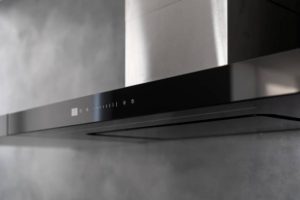One of the most important things to consider when buying a rangehood is its energy efficiency. You must ensure that the hood uses the least energy while capturing as much smoke and odour as possible. In addition, look for features such as an automatic shut-off and an easily replaceable filter.
Cost of a range hood
 The average cost of a range hood installation courtesy of https://adelaideappliancegallery.com.au/product-brands/schweigen is about fifty to one hundred dollars. It includes the labour cost, including measuring, prepping, and mounting hardware. This cost does not include the cost of the ductwork or other supplies. Depending on the type and size of your hood, it may cost more or less than this.
The average cost of a range hood installation courtesy of https://adelaideappliancegallery.com.au/product-brands/schweigen is about fifty to one hundred dollars. It includes the labour cost, including measuring, prepping, and mounting hardware. This cost does not include the cost of the ductwork or other supplies. Depending on the type and size of your hood, it may cost more or less than this.
If you opt for a ducted range hood, you will need to install the ductwork in the wall or ceiling of your home. This hood will help eliminate smoke, grease, and odours. However, this type of range hood installation is more complex than the standard hood installation. Depending on its features, the ductwork installation will cost between $200 and $1,000.
The cost of a range hood depends on the type of model and the material of the hood. Some hoods are made of copper or aluminium, which are lightweight but prone to corrosion. Other models contain stainless steel panels. Moreover, some models are made with aluminium cores, adding durability and affordability.
The size of the room will also affect the price of a range hood. Larger kitchens should choose an exhaust fan thirty-four inches wide and twenty-four inches tall, while smaller kitchens can get away with a smaller fan. Stainless steel is the most popular material for range hoods. It is durable and scratch-resistant, and it is also heat-resistant up to 600 degrees Fahrenheit. Stainless steel also comes in different colours and finishes.
The size of your kitchen will also affect the cost of a range hood. For example, a smaller range hood may be able to use a smaller fan, while a larger one will require a higher CFM. Choosing the right size is essential as the size of the range hood will affect the cost of installation.
Size of a range hood
The size of a range hood should be proportional to the size of the kitchen. For example, a 30-inch wide electric stove needs a hood that pulls a minimum of 250 CFM. If you have a smaller kitchen, you can choose a hood that pulls less than this amount.
In addition, the hood’s canopy should be at least six inches wider than the cooking area. However, if space is an issue, a canopy that’s the same width as the cooking area may be appropriate. It is especially true for narrower hoods, which can benefit from surrounding cabinets and back walls. Measuring the space between the cooktop’s top and the cooking surface’s edge is also essential.
Depending on the size of the kitchen, there are two range hoods: wall-mounted hoods and under-cabinet hoods. Wall-mounted hoods are typically taller and wider, and the height of the range hood itself is narrower.
Range hoods are essential kitchen appliances. They provide ventilation and reduce heat, moisture, and grease; the typical range hood is 30 or 36 inches tall. Its installation distance from the gas or electric cooktop should be twenty to twenty-four inches. A 30-inch model is perfect for the average kitchen.
When deciding on the size of a Schweigen rangehood, you should also consider the air pressure in the kitchen. Smaller kitchens contain less air than larger ones, so that a higher CFM range hood may be necessary.
Noise level of a range hood
When buying a range hood, it’s essential to look at its noise level. It should not exceed 65 dB, roughly equivalent to 13 sones. Most vent hoods have a sound level of six to eight sones. Another measurement for noise level is the sound pressure level, or SPL, which refers to the sound pressure level. Sound waves travel through the air, and the intensity increases with distance. Decibels are usually the most common measurement for sound pressure, but sones are also available. A noise level of 65 dB or above can harm your hearing.
Sones are the units of sound and are the basis for measuring the noise level of a range hood. One sone is 1,000 Hz, which is equivalent to 40 decibels. In comparison, four sones equal 80 decibels. Sones doesn’t increase linearly; they follow a curve. Therefore, the loudness of a range hood can be reduced by adjusting the sones.
When buying a range hood, it’s essential to consider the noise level. Some range hoods have a blower installed inside the hood, while others have a blower mounted outside. In general, range hoods are quieter than traditional models.
The speed of its fan can influence a range hood’s noise level. For quieter units, choose one with a lower speed. A good example is a model with variable speed control. It will allow you to change its speed as you need it. You should also consider the ductwork size to ensure that the unit is large enough to accommodate.